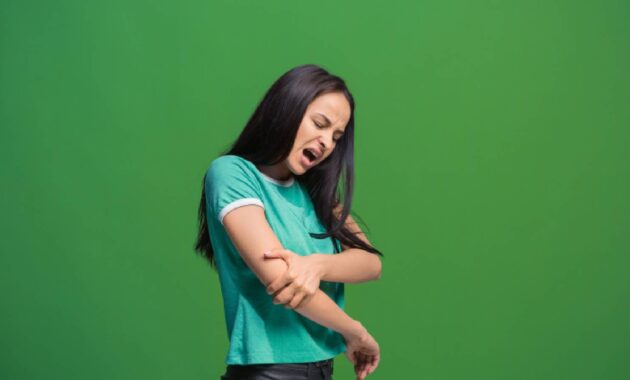Ingrown hair cysts are pus filled, red, raised bumps that needed to be tended to immediately. Here is how to identity and treat them.
Red, raised bumps, accompanied by skin darkening is what ingrown hair cysts look like. These can be infected, and pus-filled, and need to be treated urgently in severe case. While there are ‘pus heads’ in ingrown hair, cysts, on the other hand, are larger and have no head as such. Instead, they have a fluid build-up.
Ingrown hair cysts can be treated by home remedies such as warm compress or exfoliation, some might also need medication and treatment. However, it is very important to not excessively scrub or try to remove the pus on your own. Health Shots got in touch with dermatologist Dr Priyanka Kuri to understand all about ingrown hair cysts, and how to treat these.
What is an ingrown hair cyst?
An ingrown hair cyst is a common skin concern that arises when a hair, instead of growing outwards, curls back and burrows into the skin. “This trapped hair triggers the body’s inflammatory response, leading to a bump or cyst formation,” says Dr Kuri.

How do you identify an ingrown hair cyst?
Identifying an ingrown hair cyst is usually straightforward. It typically appears as a small, red bump that might feel tender to the touch. “Sometimes, the trapped hair itself may be visible within the bump. In some cases, the cyst might appear white or yellow, which could indicate the presence of pus, signifying an infection,” says Dr Kuri.
Causes of ingrown hair cyst
1. Shaving
Shaving, especially against the grain, can sever the hair shaft, making it easier for the tip to curl inwards and become ingrown.
Also Read

2. Waxing
Similar to shaving, waxing forcefully removes hair from the follicle, increasing the risk of the hair growing back inwards.
3. Tight clothing
Wearing tight-fitting clothes, particularly in areas prone to ingrown hairs, like the groin or buttocks, can trap sweat and hair, creating a favorable environment for ingrowth.
4. Certain hair types
Coarse, curly hair is more prone to ingrown hairs compared to straight or fine hair, as the curls are more likely to turn inwards and pierce the skin.
5. Skin conditions
Skin conditions like keratosis pilaris, which causes rough, bumpy patches on the skin, can also trap hair and increase the risk of ingrown hairs.
How to treat ingrown hair cysts?
For mild ingrown hair cysts, there are some home remedies that can often be effective.
Select Topics of your interest and let us customize your feed.
PERSONALISE NOW
1. Warm compresses
Applying warm compresses to the affected area for 10-15 minutes, several times a day, can help reduce inflammation and encourage the hair to surface.
2. Exfoliation
Gently exfoliating the area with a washcloth or a mild scrub can help remove dead skin cells and potentially dislodge the trapped hair.
3. Over-the-counter topical medications
Applying an over-the-counter antibiotic cream or salicylic acid solution can help reduce inflammation and fight potential infection.
However, one needs to go to the doctor if the cyst:
• Becomes larger and increasingly painful
• Shows signs of infection, like redness, pus, or fever
• Doesn’t improve with home care for over a week
Also Read: Skin rash or eczema: How to find out?
What not to do while nursing an ingrown hair cyst?
1. Picking or squeezing
This can worsen inflammation and increase the risk of scarring or infection.
2. Harsh scrubbing
This can irritate the skin and potentially worsen the ingrown hair.
3. Use of harsh topical products
Avoid using harsh soaps or drying astringents on the affected area, as they can further irritate the skin.
How to prevent an ingrown hair cyst?
1. Shaving technique
Shave with the grain of your hair growth and use a sharp, single-blade razor. Rinse the razor frequently and consider using a shaving gel or cream for better lubrication.
Also Read: Armpit rash: 6 causes and how to treat it
2. Exfoliation
Regularly exfoliate the areas prone to ingrown hairs to remove dead skin cells that might trap hair.
3. Clothing choices
Opt for looser-fitting clothing, especially in areas prone to ingrown hairs, to allow for better airflow and prevent friction.
4. Hair removal alternatives
Consider alternative hair removal methods like laser hair removal or depilatory creams, which can reduce the risk of ingrown hairs compared to shaving or waxing.
#Ingrown #hair #cysts #identify #treat
